Books to Read
Every sensei should have a recommended reading list. The list below is composed of books that have helped me form my martial arts “values” as well as serve me equally in my non-martial arts life. I hope you find them worthwhile and as equally rewarding as they have been to me. Please be aware that some of these books may be out of print, but may be available as electronic media, on eBay or you may be able to purchase used copies through Amazon or eBay.
If you’d like to read some great articles and editorials by respected martial artists, go to my “Books” page in my store and scroll down to Kokoro. This PDF pack contains all issues of Kokoro [my monthly newsletter] going back to 1994, and each issue usually has at least 1-2 well-written editorials or opinion piec
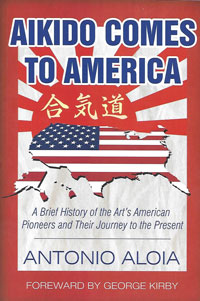
Antonio Aloia, Aikido Comes to America, Tambuli Media, NY, 2020, ISBN 978-1943155-33-0. Antonio Aloia’s first book is an excellent resource for the history of aikido and it’s movement to the United States. The book includes ample information on most of aikido’s leaders in the US, growth trends in the US, as well as top martial artists in other related arts. Aikido Comes to America is probably the most well-documented martial arts book I’ve seen. It is well written and easy to follow. If you want a complete history of aikido in the US this is the book to get.
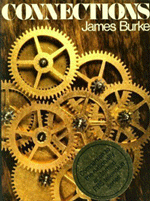
James Burke, Connections, 1980. Although this book doesn’t have anything in particular to do with the martial arts it also has everything to do with the relationships and history of the martial arts. Connections deals with the history of the world differently; topically rather than solely chronologically – showing how one thing or event affected another thing or event. It drastically changed how I taught and looked at history as well as current issues as a history and government teacher throughout most of my public school teaching career. Teaching history, government, geography or economics and current events from a “connections” viewpoint was simply more logical and helped those subjects make more sense to my students. Whether or not you’re a “history” buff in any subject, this book will change your perspective.
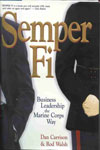
Dan Carrison and Rod Walsh, Semper Fi, Business Leadership the Marine Corps Way, Amacom, NY, 1999, ISBN 0-8144-0413-8. Want to develop sound leadership and solid loyalty? This book clears up many of the misconceptions of USMC training and brings the same form of positive supportive leadership into the civilian and business world. Leadership is more than just telling people what to do. Leadership is established by being in the front lines with all your “troops”. It’s you’re willingness to get your shoes just as dirty as anyone else’s while providing an example of being out in front and at the same time making sure that everyone is up there with you. You, the leader, are the example! It is extremely well-written and should be in any top sensei’s book collection. Dan Carrison is one of my Black Belts. I recommend this book to all my black belts!

Dave Clark, Complete Guide to All Budoshin Jujitsu Techniques from White Belt Through Tenth-Degree Black Belt, 2017. I am continually amazed at what my black belts turn out as instructional guides for their students. Dave is probably one of my most prolific black belts. If you want an excellent and comprehensive guide which is a real asset to Budoshin Jujitsu sensei and helps students self-direct their own growth in the art, this is an unmatched resource. It cross references belt requirements, my Panther videos, and the “Big Book” into visual belt rank sequences with summarized descriptions of techniques to help students remember techniques. This comprehensive training manual contains “Quick Cross-Reference Study Guides”, “Prompts”, and “Test Study Guides”. For more information please contact Sensei Dave Clark at pianoman@atrq.com .
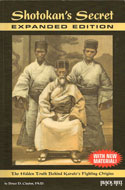
Bruce D. Clayton, PhD, Shotokan’s Secret: The Hidden Truth Behind Karate’s FIghting Origins {Expanded Edition]. Cruz Bay Publishing, 2010, ISBN-10: 0-89750-188-8. Bruce Clayton has done an exceptional amount of research to backtrack the history and origins of Shotokan Karate. His expanded edition is a very enjoyable read complete with technique pix as appropriate and an extensive bibliography. 382 pages.

Thomas Cleary, Soul of the Samurai. This is one of three books I picked up as I was interested in Yagyu Munenori. It contains a slightly different translation of The Killing Sword, The Life-Giving Sword, and No Sword. Why read different translations of the same writings? Because I think you get a more accurate interpretation of a writer if you read different interpretations of his original writings. [Of course, if I could read Japanese then I could read the original writings by Yagyu Munenori.

Darrell M. Craig, Japan’s Ultimate Martial Art; Jujitsu Before 1882 The Classical Japanese Art of Self-Defense. Charles E. Tuttle Co., 1995, ISBN 0-8048-3027. If you’d like to read a good book on the history of Ju-Jitsu in Japan, along with line drawings of techniques and other eclectic material, this is a great resource. There’s also some good “trivia” in here that isn’t found anywhere else in dealing with the formalities of the art.

Don Cunningham, Secret Weapons of Jujutsu. In his first book, Don Cunningham places considerable emphasis on the history and use of the jutte. It has lots of great pix of various jutte & other related weapons. This is an essential book for your library if you’re into weapons.

Don Cunningham, Taiho-Jutsu: Law and Order in the Age of the Samurai. This is Don Cunningham’s second book dealing with the jutte as well as other arrest techniques from the samurai of the Edo period in Japan. Cunningham sensei provides a great deal of insight into how life was conducted during the Edo period. This book is well written, has excellent drawings of jutte techniques, and is easy to read. Get yourself a copy and sit down for some enjoyable reading.
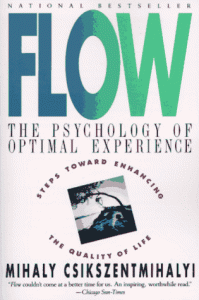
Mihaly Csikszentmihalyi, Flow: The Psychology of Optimal Experience. Although this is not a martial arts book I highly recommend it because it establishes validity to the oriental concept of mushin. Through various validated “western” research, Dr. C, [as he is known to his students], presents a concept known as the “flow theory” which is identical to the concept of mushin. As with mushin, the flow theory can also be applied to your daily life.

Tri Thong Dang, Beyond the Known: The Ultimate Goal of the Martial Arts, Although the author presents the “ultimate goal” from his perspective, what author doesn’t? This is worthwhile reading from a highly knowledgeable and experienced sensei.

Gavin De Becker, The Gift of Fear and Other Survival Signals That Protect Us From Violence, Random House, NY, 1997, ISBN: 978-0-440-50883-0. This book, sent to me by a federal law-enforcement agent, is a book worth reading. We all are [or should be] aware of ‘situational awareness”, “6th sense”, “gut feeling”, and other terminology that hopefully protects us from bad experiences. The Gift of Fear takes this to another level by helping the reader understand the difference between imagined fear, which can isolate us, and real fear, an actual awareness that something bad may actually happen and allows us to be proactive. De Becker also presents simple but effective tools for differentiating between real and imagined fear. There is a difference between living in fear and having the tools to recognize and control real fear, an important asset to any martial artist, law-enforcement, military or lay person.

Taisen Deshimaru, The Zen Way to the Martial Arts. There are many good books dealing with Zen. I chose this one because it was straightforward and devoid of interpretations and examples which may limit your thinking because they give you a false sense of direction. It is well written and you can easily see how Zen can apply to your life and lifestyle.

Kensho Furuya, KODO: Ancient Ways, Lessons in the Spiritual Life of the Warrior/Martial Artist. I had the privilege of first meeting Rev. Kensho Furuya through the LAPD Civilian Martial Arts Advisory Panel, of which were both members. Furuya Sensei always impressed me as being soft-spoken and completely dedicated to his art and the martial art. KODO is extremely well written and thought provoking. That is what I believe he meant it to be. Furuya Senseis writing is easy to follow while causing a great deal of self-reflection at the same time. He makes good use of Japanese history and well-placed analogies to prove his point or that of other well-respected sensei. I think that it is the simplicity of what he says that brings clarity to complex western thought regarding the martial arts philosophy. KODO; Ancient Ways will be a welcome addition to my library of books on philosophy. I urge you to read this book. It will help you understand your art and your life. Does the teacup really reflect the moon?

Jay Gluck, Zen Combat [& the Secret Power Called Ki]: Personally Oriented. This is an interesting book for someone wanting a different overview of the martial arts. It’s not always available – but it’s a great book to get!
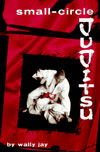
Wally Jay, Small Circle Jujitsu. This is a “must have” book for anyone seriously interested in Ju-Jitsu. Prof. Jay presents his small circle theory which works on the concept of efficiency and minimal movement.
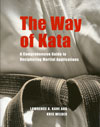
Lawrence A. Kane and Kris Wilder, The Way of Kata; A Comprehensive Guide to Deciphering Martial Applications. YMAA Publication Center, Boston, MA, ©2005. This is a very well organized and structured book which follows a consistent theme and provides strong support for the concepts presented. The Way of Kata is representative of a “second generation” of martial arts books being published in the U.S. Rather than just presenting techniques, these “second generation” books delve into the theory and backgrounds of how/why techniques work. They also develop constructs that help simplify the arts they are discussing – even though those discussions may be very complex.
Martial artists are ready for this second generation of more professional and exploratory examination of the martial arts. This approach reflects a more mature approach towards studying any martial art and its elements. Although I took issue with a few small elements, the book does cover a lot of important ground that affects all martial arts in the same way. It also gave time to some items [finer points] that many instructors simply gloss over, but which are of major importance to being successful in any martial art, whether it be to perfect the art [a life-long endeavor] or use the art for effective self-defense.

Sun Tzu, The Art of War. Whether you’re on the mat, on the street, or in the business world, you need to read and master the concepts of this book. I would probably put this book at the top of my recommended reading list. Strategy, planning, knowledge of the opposition, and the efficient use of resources are a requirement for any form of success in the world.
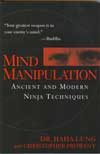
Dr. Haha Lung and Christopher Powant, Mind Manipulation: Ancient and Modern Ninja Techniques, © 2002. I ran across this book at Barnes & Noble, sat down with a cup of coffee at their Starbucks, and almost finished the book by the time I finished my coffee. [I drink slowly.] This is a very easy read and straight to the point. I don’t know about “ninja techniques” [except as a catchy title], but it really build on Sun Tzu’s concept that the easiest way to defeat an enemy is in his mind. Mind Manipulation lays out all sorts of strategies, ancient and modern, to defeat your opponent through mind manipulation. It provides real tools for dealing with attempts at mind manipulation in the modern world. Yes, I bought the book and finished the rest of it at home.

Yagyu Munenori, The Way of the Living Sword: The Secret Teachings of Yagyu Munenori, [trans. by D.E. Carver]. This is another translation of Munenori’s writings.

Yagyu Munenori, The Life Giving Sword: The Secret Teachings from the House of the Shogun, [trans. by William S. Wilson], This is probably the most enjoyable translation of Yagyu Munenori’s writings and the first one I read. Once I read Wilson’s translation I was curious as to what other translations also said.

Miyamoto Mushashi, The Book of Five Rings. The world flows along many pathways. This book presents a clear approach on how you can guide your life. Although it’s a short book and is deceptively easy reading on the surface, its concepts lead to serious thinking and evaluation of what you’ve read. This is also another book you need to put at the top of your reading list for philosophical growth and success in your life.
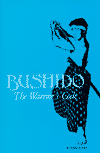
Inazo Nitobe, Bushido The Warrior Code.
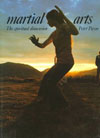
Peter Payne, Martial Arts: The Spiritual Dimension.
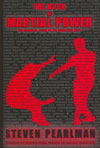
Steven Pearlman, The Book of Martial Power: The Universal Guide to the Combative Arts. When I first read this book it blew my mind. It seems that Steven and I were almost on the same page as when I wrote Advanced Jujitsu: The Science Behind the Gentle Art. In fact both of our books were published in 2006. Although my approach at dealing with universal concepts came from my background of ju-jitsu, Steven’s approach evolved from the “hard” arts. What is absolutely amazing is that both books not only inherently support each other, but each book covers different aspects of the same issues. It’s almost like we got together before writing our separate works and splitting up the task. I also believe, that as Steven said, both books are an unintentional reaction to the current MMA trend. Traditional martial artists recognize the need to start looking at universal concepts of how and why techniques work. It is the ability to present this information that will confirm the validity and strength of the traditional martial arts. It also shows how the same concepts are used by the MMA and may lend some sense of common structure to that area as well.
The Book of Martial Power, much like my book Advanced Jujitsu, will take some time to read and understand. To get the total picture you’ve got to read both books.
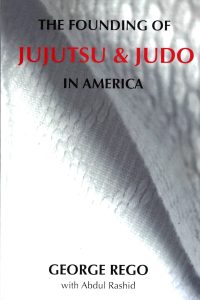
George Rego, The Founding of Jujutsu & Judo in America. If you’d like to read a great book on the founding of jujitsu and judo in America, you’ve got to pick up a copy of this book with the same title. George Rego has done an exceptional job of putting historical data and events together into a very readable 307-page book. Once I picked it up I couldn’t put it down, spending 1½ days to read it. In addition to providing a good history, this book includes a variety of pictures plus comprehensive interviews of major current jujitsu leaders. [I was honored to be one George’s interviewees.]
For a self-published book it is extremely well written and moves very smoothly, with no spelling, grammar, or material/contextual flow issues. It just reads very nicely.
The Founding of Jujutsu & Judo in America is available on Amazon.com

Robert T. Samuel, The Samurai; The Philosophy of Victory, © 2004. This is another Barnes & Noble book I picked up because the cover looked interesting. It presents a summary of the life of the samurai as depicted by excerpts and summaries of traditionally classic readings. if you want a quick or introductory education on the standards and way of life of the samurai this is a good book to get. There is quite a bit of good in this book. The Samurai is well laid out, has great pix/artwork, and is well organized. It also serves as an interesting book to have on your coffee table as a conversation starter.

Oscar Rattl & Adel Westbrook, Secrets of the Samurai: A Survey of the Martial Arts in Feudal Japan. If you want a good detailed history of the martial arts in Japan this is an excellent resource/ It gets bogged down in details at times [that are interesting] but it’s still an excellent resource that includes insight into this period of Japanese history.
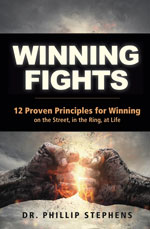
Dr. Phillip Stephens, Winning Fights: 12 Principles for Winning © 2018. There are numerous books written for the martial arts that deal with the philosophical elements a good martial artist should be aware of and make part of his/her essential philosophy. However, Winning Fights goes beyond simply providing the martial artist with 12 rules for successful training. Although Dr. Phillip M. Stephens covers 12 elements essential to winning a fight, the well-documented concepts presented by him put his book among my top reading recommendations, not only for martial artists, but for anyone else in any field who wishes to improve their chances for success, Much like Sun Tzu’s The Art of War, Dan Carrison one of my students] and Rod Walsh’s Semper Fi: Business Leadership the Marine Corps Way, and Anders Ericsson and Robert Pool’s Peak; Secrets from the New Science of Expertise, Dr. Stephen’s “12 Principles” are essential to success in any field or endeavor.
Dr. Stephen’s style is precise and to the point. He doesn’t meander about but sticks to the meat of the matter, providing the reader with historical and current examples and references to support his thesis. The last chapter [or appendix in the case of this book] brings his 12 Principles together and is an absolute “must” if you desire to fully understand the book. Winning Fights is well written. It moves well and is understandable. Take your time reading it though if you really want to enjoy it.
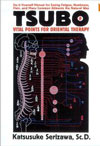
Katsusuke Serizawa. Tsubo: Vital Points for Oriental Therapy. Believe it or not I actually found the hardback version of this book [now out of print] at the Japanese Pavilion in the EPCOT Center, Disneyworld, Florida. This is probably the best resource for pressure points that I have ever found. It is also a exceptional resource concerning Oriental pressure point therapy. If you can find this book BUY IT! The copies at Amazon are paperback and hardbound. Expect to pay $50+ for books in good or new condition.

William S. Wilson [trans], Budoshoshinshu: The Warrior’s Primer . . . .

William S. Wilson [trans], Budoshoshinshu: The Warrior’s Primer . . . .

Anders Ericsson & Robert Pool, Peak: Secrets from the New Science of Expertise. If you want to secure expertise the authors present the tools to achieve success. They have well documented the concept of “purposeful practice” to reach your optimum level of expertise. Although the book is a bit wordy and redundant, it is an easy read and the ideas presented make sense. Once you finish this book also read Mihaly Csikszentmihalyi, Flow: The Psychology of Optimal Experience and see how they compare and differ.
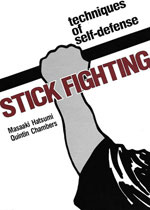
Masaaki Hatsumi & Quintin Chambers, Stick Fighting: Techniques of Self-Defense. I think this was the first martial arts book I purchased because Seki did a hanbo demonstration, as an application of “empty-hand” application to a martial arts weapon in class and it intrigued me. The techniques in this book are easy to learn and effective, especially if you have a good background in traditional jujitsu or even aikido and understand the “empty-hand” concept. I loaned this book out decades ago and it was never returned. Thanks to Sensei Jerry Heines, [5th dan Taekwondo] for “recommending” the book to me. I immediately purchased a copy of Amazon to add to my reference library.
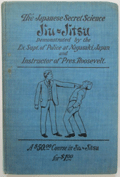
The Japanese Secret Science Jiu-Jitsu [published 1905] 2/17
I don’t know how long this link will be active but you need to download this great historical resource showing jujitsu techniques taught to President “Teddy” Roosevelt. Thanks to Robert Harland for making this resource available. Lots of “Budoshin Jujitsu” techniques! 🙂 Click on the title to download the link!
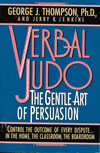
George J. Thompson, Ph.D., and Jerry P. Jenkins, Verbal Judo: The Gentle Art of Persuasion © 1993. I’d heard about this book a number of times over the past 20+ years, but it took Akagi Kayashima’s generosity to surprise me with a copy to read. FIrst, it is an extremely easy read. It is well organized, written, and the ideas are presented in a logical manner. Verbal Judo is just that: how to use your verbal skills to “gently” persuade anyone to follow your directions. It is not about winning arguments, but resolving the actual issues in a nonthreatening manner. In essence it’s a win-win most of the time. The verbal skills presented can be used in any number of situations, from dealing with children to unstable adults.

